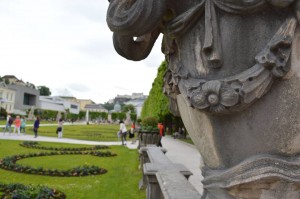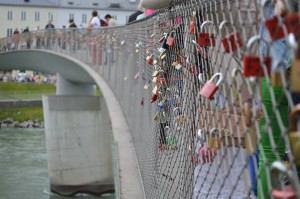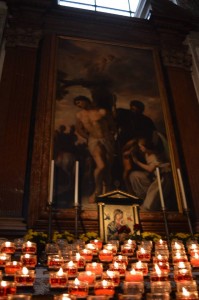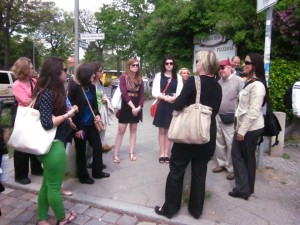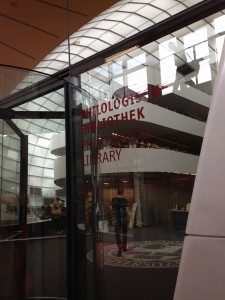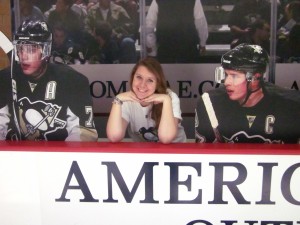by Johnie Freiwald
Point Park University students and faculty visited Salzburg, Austria, on Sunday, May 19, on a side trip as part of this year’s International Media class. Salzburg has a rich history of musically talented people. The students dodged raindrops to see the birthplace of Wolfgang Amadeus Mozart and where the famous singing Von Trappe family lived, a real family made famous by their story’s retelling in the widely known film 1965 film “The Sound of Music.”
When the Point Parkers arrived in Salzburg, they met Ursula, their tour guide for the day. The tour began at the intricately designed Mirabell Gardens. The garden is near the steps made famous by the Trappe family children singing “Do, Re, Me” in “The Sound of Music.” Next to these beautiful gardens, the tradition of music continues, in the Mozarteum. This music university hosts musicians from all over the world and takes pride in training today’s musicians and theatre arts students. The Mozarteum is also home to the Salzburg Mozarteum Orchestra, one of Austria’s most well-known orchestras and a longtime participant at the Salzburg Festival in July.
The tour included brief stops at the two houses where Mozart lived – where he was born and where he lived as a teenager before leaving for Italy and finally Austria, playing for kings and queens during his brief but prolific career as a composer and musician.
The Point Park students then crossed the Makarsteg Bridge, which is home to many lovelocks. A lock is placed on the bridge by a couple to symbolize that their relationship will last forever. After the lock is placed on the bridge the key is thrown into the Salzach River. As the group proceeded on their tour of Salzburg they saw vendors selling goods by the river. Many generations of Austrians have had the pleasure of enjoying these open air markets. They are now visited by citizens and tourists alike.
On a Sunday, many residents strolled the streets dressed in their traditional Austrian garb, something Ursula said is very common and evidence of pride in their heritage.
One of the most prominent features of Salzburg is the vast number of churches. One specific church, Sebastianskirche and Friedhof, which has been repeatedly rebuilt due to deterioration and natural disasters, features the classic baroque style that is so iconic in Gothic architecture. The church contains a crowded but very beautiful cemetery that is the resting place for hundreds of late Austrians.
The last stop on the tour was the Salzburg Cathedral. The church was lit up with brilliantly colored lights to celebrate the Catholic youths convening that weekend in Salzburg. There were rows of flickering candles surrounded by groups of prayerful churchgoers, young and old. Outside, the group admired the grand architecture and marble stairs. Even near the church there were plenty of street vendors and money to be made by musicians and buskers, especially across the street where an army of horse-drawn carriages stood in waiting for tourists to purchase their services and ride through the Salzburg streets.
The group finished its visit in Salzburg with free time to explore the collection of shops, cafes, and street vendors followed by some traditional Austrian dining. The Point Parkers then embarked for their train and returned safely, yet exhausted, to Munich.
